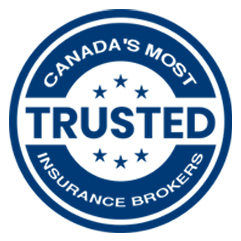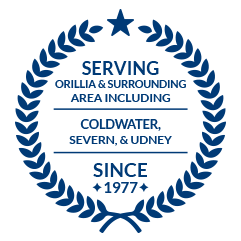What Is Condominium Insurance and What Does It Cover?
Condominium living often blends private ownership with communal responsibility. Your title gives you personal property rights inside the suite, yet hallways, elevators, and the roof belong to everyone. A water leak in the unit above can ruin your hardwood floors, while a slip-and-fall in the lobby might still name you in a lawsuit.
Provincial legislation requires each condominium corporation to hold a master policy, but that policy leaves many gaps. Condo insurance fills those gaps so owners avoid paying repair bills out of pocket or facing liability claims alone.
Why Condo Owners Need a Dedicated Policy
Owning a condo differs from owning a house or renting an apartment. The corporation’s master policy focuses on the building shell and shared areas, not the upgrades you paid for or your personal belongings. Without individual coverage, you could:
- Pay to rebuild interior finishes if fire or water damages cabinets, flooring, or fixtures that exceed the original builder grade.
- Replace furniture, clothing, and electronics after theft, smoke, or lightning.
- Cover legal expenses if a visitor trips on your area rug and sues.
- Find a temporary place to stay when the unit is unfit to live in during repairs.
In many provinces, mortgage lenders and boards insist on proof of condo insurance before closing. Even when it is not mandatory, the financial risk of going without coverage is significant.
Related Article: Does Tenant Insurance Cover Damage to Landlord’s Property?
The Split Between the Corporation’s Master Policy and Your Unit Policy
Every condominium corporation in Canada must purchase a master policy. Its wording varies by insurer and province, yet it usually includes these elements:
- Common Property Insurance – This protects hallways, the building structure, mechanical systems, landscaping, and amenities such as pools or gyms.
- General Liability Insurance – This responds when the corporation is sued for injuries or property damage connected with common areas.
- Director and Officer Liability – Board members gain protection against legal action related to their decisions.
Your personal condo policy begins where the master policy ends. It insures what is inside the suite, plus certain assessments the board may levy after a loss. Reviewing the corporation’s certificate of insurance, bylaws, and standard unit description helps you and your broker set appropriate limits.
Related Article: Can a Landlord Require Tenant Insurance?
Core Protections in a Standard Condo Insurance Policy
A comprehensive condo policy combines several coverages. Each one solves a specific risk that owners face in shared buildings.
Unit Improvements and Betterments
Renovations that add value, such as quartz counters or engineered hardwood, usually sit outside the corporation’s “standard unit.” If fire, burst pipes, or an upstairs overflow damages those features, your policy pays to restore them with like-kind quality.
Personal Property (Contents)
Furniture, appliances, clothing, and art are covered for named perils such as fire, smoke, vandalism, water escape, or theft. The limit should equal the cost to buy new items today, not their depreciated value. High-value items like jewellery or bicycles may need separate riders.
Additional Living Expense (Loss of Use)
If an insured peril makes the suite uninhabitable, this section funds hotel stays, restaurant meals, pet boarding, and moving costs. Coverage applies until the unit is repaired or you find comparable housing.
Personal Liability
Condo owners can be sued for injuries or unintentional damage they cause anywhere in the world. Liability protection pays legal defence fees and court awards up to the chosen limit, commonly $1 million or $2 million.
Voluntary Medical and Property Damage Payments
Small-scale incidents that do not reach the liability threshold, such as a friend’s minor cut or a broken neighbour’s lamp, can be settled quickly under this extension.
Loss Assessment
After a major loss, the master policy may fall short, leaving the board to charge each owner a share of the deductible or uncovered cost. Loss assessment coverage pays your portion, preventing surprise bills that can climb into five figures.
Optional Add-Ons Worth Considering
The climate and construction style of your building influence which extras to buy. Talk with a licensed broker about:
- Comprehensive Water Coverage – Protects against sewer backup and fresh-water ingress during heavy rain.
- Earthquake Coverage – Essential in British Columbia and parts of Québec where seismic activity is higher.
- Cyber and Identity Theft Protection – Reimburses expenses after fraud or hacked accounts.
- Equipment Breakdown – Covers built-in appliances and electronics against sudden mechanical failure.
Adding these options costs more, yet the premiums remain modest compared with rebuilding or legal expenses.
Related Article: What Does Landlord Insurance Cover?
What Is Excluded?
Even the broadest policy has exclusions. Most insurers will not pay for:
- Wear and tear, gradual deterioration, or maintenance issues
- Flooding from coastal storm surge (a separate flood policy may be available)
- Damage from tenants engaged in illegal activities
- Losses while the unit is vacant beyond the policy’s allowed period
- Nuclear incidents or war
Reading the exclusions helps you plan maintenance and decide if specialty coverages are needed.
How Much Coverage Do You Need?
Arriving at the right limits starts with a room-by-room inventory. List furniture, electronics, décor, and clothing, then research replacement prices. Next, estimate the value of fixtures and finishes that are better than the builder’s standard. Your broker can review contractor quotes or cost guides to set an improvement limit.
For liability, choose the highest limit you can reasonably afford. Court awards continue to rise across Canada, and a serious injury claim can quickly exceed $1 million.
Loss assessment coverage should at least match the corporation’s deductible. In Ontario and Alberta, deductibles of $50 000 or even $100 000 are no longer rare, especially for water damage.
Cost Factors and Practical Ways to Save
Premiums depend on many variables, yet owners can control several of them:
- Building Construction and Location – Concrete high-rises with sprinklers often see lower rates than older wood-frame walk-ups.
- Claims History – A prior water claim can increase cost for up to five years.
- Chosen Deductible – Opting for a $1 000 or $2 500 deductible instead of $500 reduces the annual premium.
- Security Features – Deadbolt locks, monitored alarms, and sprinkler systems earn credits.
- Bundling Home and Auto – Placing auto and condo policies with the same insurer usually unlocks a multi-policy discount of 5 % to 15 %.
The annual premium for a Toronto two-bedroom suite can range from $350 to more than $700, depending on these factors. Rates vary by province and insurer, so comparison shopping through a broker is essential.
Buying Condo Insurance: Step-by-Step
Securing a policy is straightforward, yet careful preparation speeds the process:
- Collect Your Documents – Obtain the corporation’s insurance certificate, bylaws, and standard unit description.
- Create an Inventory – Photos, serial numbers, and receipts help prove ownership after a loss.
- Discuss Coverage Needs – A licensed broker at Ron Johnston Insurance will explain limits, optional add-ons, and deductible choices.
- Review Quotes – Compare price, wording, and claims service reputation. The cheapest policy is not always the best value.
- Confirm Effective Date – Coverage should begin the moment you take title or possession.
Annual reviews keep your policy aligned with renovations, new purchases, or bylaw changes.
Ready to Protect Your Space?
Condominium ownership offers convenience and a sense of community, yet shared living introduces financial risks that personal condo insurance is built to manage. Understanding how the master policy and your unit policy interact helps you choose limits that truly shield your savings. From water damage to liability lawsuits, the right coverage keeps unexpected costs from derailing your budget.
Ron Johnston Insurance works for you, not the insurance companies, comparing options across Canada’s leading insurers to find a policy that matches your needs, lifestyle, and budget.
Speak with a licensed advisor today and enjoy condo life knowing your investment and your peace of mind are protected.
- September 2025
- August 2025
- July 2025
- June 2025
- May 2025
- April 2025
- March 2025
- February 2025
- January 2025
- December 2024
- November 2024
- October 2024
- September 2024
- August 2024
- July 2024
- June 2024
- May 2024
- April 2024
- March 2024
- February 2024
- January 2024
- December 2023
- November 2023
- October 2023
- September 2023
- August 2023
- July 2023
- June 2023
- May 2023
- April 2023
- March 2023
- February 2023
- January 2023
- November 2022
- October 2022
- September 2022
- August 2022
- July 2022
- June 2022
- May 2022
- November 2021
- January 2018
- December 2017
- November 2017
- October 2017
- September 2017
- August 2017
- July 2017
- May 2017
- April 2017




